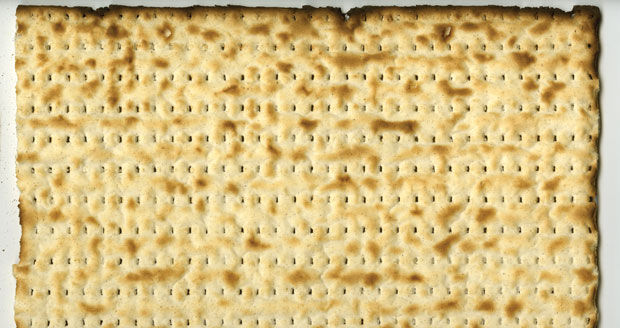Ideas for keeping family seders creative, engaging
Published March 25, 2015
As Pesach approaches, local voices in the community confirm that music, participatory elements and good old-fashioned creativity remain the best ways to engage children during a Passover seder.
“The overarching method is to do things that are interactive and fun but still tell the story of Passover and connect the kid’s lives to why you are doing it,” said Rabbi Brad Horwitz, director of Jewish engagement and adult programs at the Jewish Community Center.
Horwitz said he has heard of seders that incorporate everything from YouTube videos to group discussions.
“I have a history in my own family of doing very creative seders,” he said. “We would often have themes. When the seder would fall around the Academy Awards, we would have a movie theme. It was all about creative ways to tell the Passover story, not just go to the Haggadah and read it.”
Another instance took advantage of the holiday’s proximity to basketball’s March Madness.
“We did a bracket with all of the Passover symbols,” he said. “We put them up on the board and had a ton of debate around the table. If you had to stack up the maror against the charoset, which is the more important symbol? Who would win?”
Horwitz said one key to keeping youngsters interested is to pick age-appropriate activities. Younger children will need more adult-provided structure while older ones might be able to do more on their own, including holding discussions or leading parts of the seder themselves.
“The key is preparation. I find that people, unfortunately, wait until the very last minute but in order to have a seder that is engaging for the children, you have to plan ahead of time what you are going to do,” he said.
Corinne Lagoy of United Hebrew Congregation said that preparation doesn’t have to be solely the responsibility of the adult participants either. Allowing children to have a role in planning can keep them more involved. A child might enjoy setting the table or helping make the food.
“If they are part of it and can take ownership of it, they’ll be much more likely to be engaged in the seder,” said Lagoy, director of early childhood engagement at her congregation.
At UH, she said the focus is heavy on interactivity, especially in highlighting the plagues where children can toy with everything from puppets to plastic frogs. Cotton balls stand-in for boils and youngsters don sunglasses to simulate darkness. Meanwhile, clergy role-play, dressing up as Moses and Pharaoh just before the iconic scene in the story.
“We’ve done it all different ways,” she said. “I think this year, we’ll do red paper or cellophane on the floor. We part it and the kids walk through it.”
Shelley Dean, owner of Rhythm and Ruach, an experiential Jewish music program, said keeping things creative and relevant are the important guidelines for preparing a seder for youngsters. But some theatrical touches can help, too. Pelting participants with ping pong balls can exemplify hail while turning tap water to “blood” can get a child’s eyes to widen– thanks to a little help from red food coloring hidden in the bottom of the pitcher.
“Props are really a key and most easily brought in when it comes to the plagues,” said Dean.
Most important however, is for families to “think outside of the dinner table.” Activities should be experiential, not just passive listening.
“Kids sitting still around a table isn’t their forte,” she said. “We try to create a seder that’s more of a moving seder. We’ll have props set up in different rooms of the house to incorporate much of the space.”
Dean encourages parents to perform skits for kids or to have children interpret part of the story. Treats can be offered for right answers to questions – or for children who ask good questions.
Regardless, it is vital that the process be kept interesting.
“Some of us grew up having seders that were very, very dry and boring and something we do not look forward to,” she said.
Still, some parts of the Exodus story may be too scary for young ears. The plague of death striking the firstborn may require a euphemistic treatment or simply be left out until children are older.
Rabbi Levi Landa, director of programming at Chabad, agrees that the Tenth Plague might have to be sanitized a bit for young listeners in favor of a focus on less grim aspects of the famous story.
“The frogs are a really big one,” he said. “You can choose to play up the ones they will relate to.”
He says more good ideas are available at “Seder Wizard” at showmechabad.com/holidays/passover, kveller.com, challahcrumbs.com and creativejewishmom.com. Landa said he’s been asked to join at least three or four Facebook groups in the last week that aim to make Passover more accessible for children.
Yet, Landa said the seder’s appeal to kids is far older than the Internet.
“The Passover seder is one tradition where, from the very beginning going back thousands of years, it was designed to engage the children specifically,” he said. “There are a host of traditions that we do for the express purpose of having them ask questions. The children have always had a role.”















